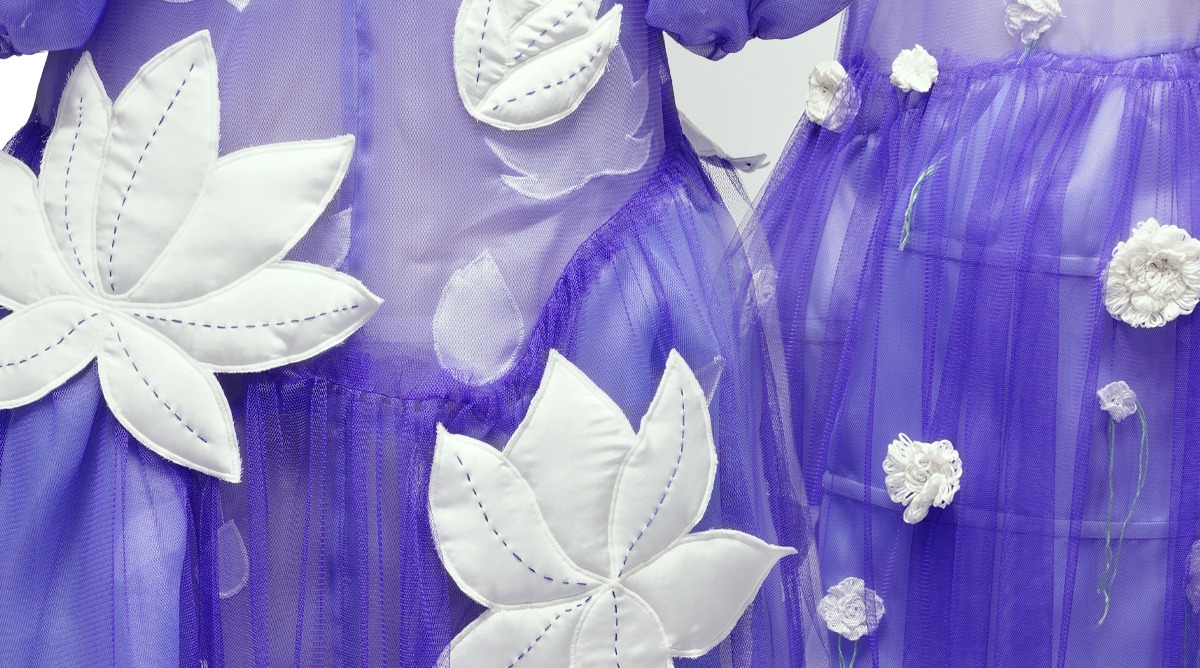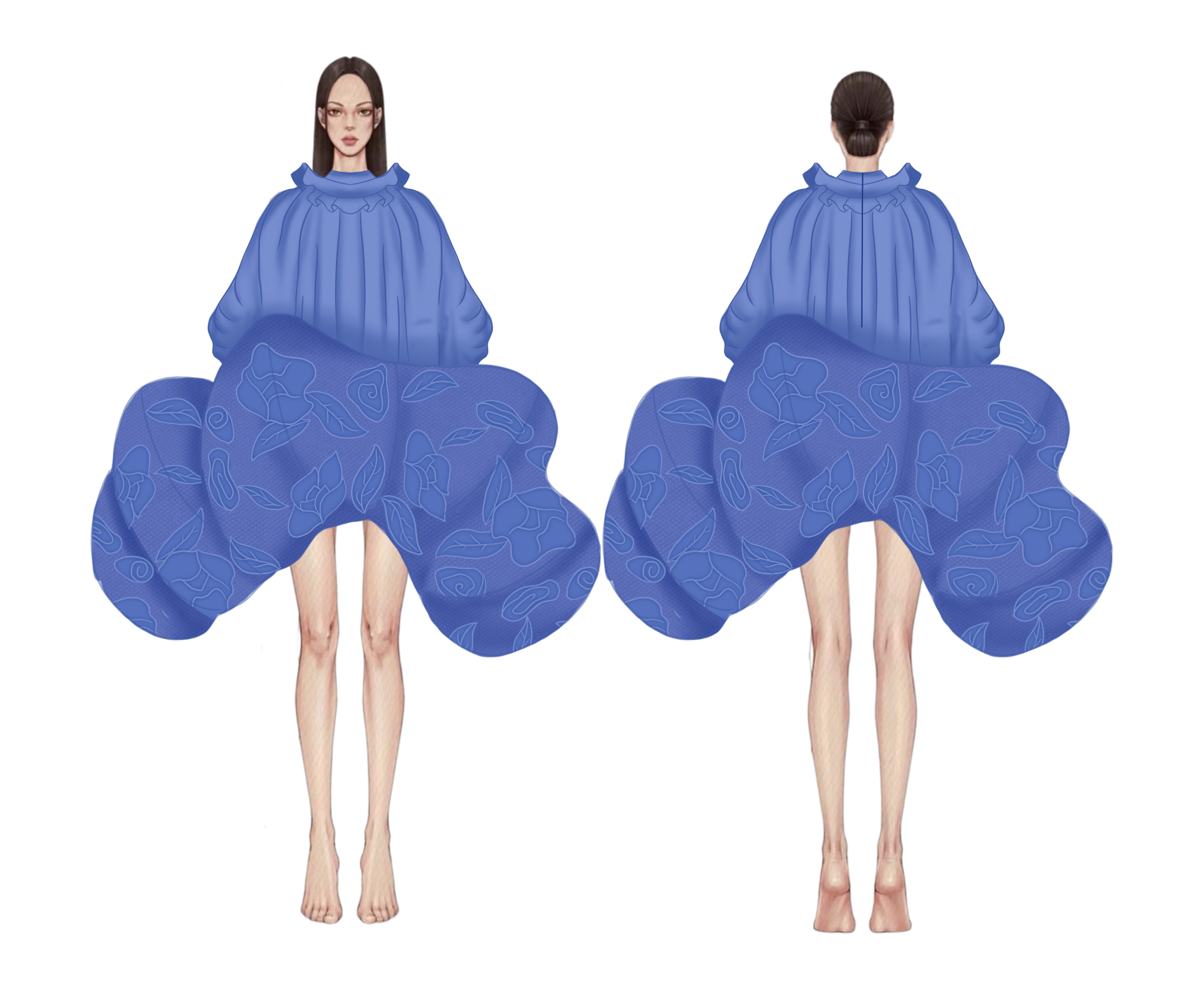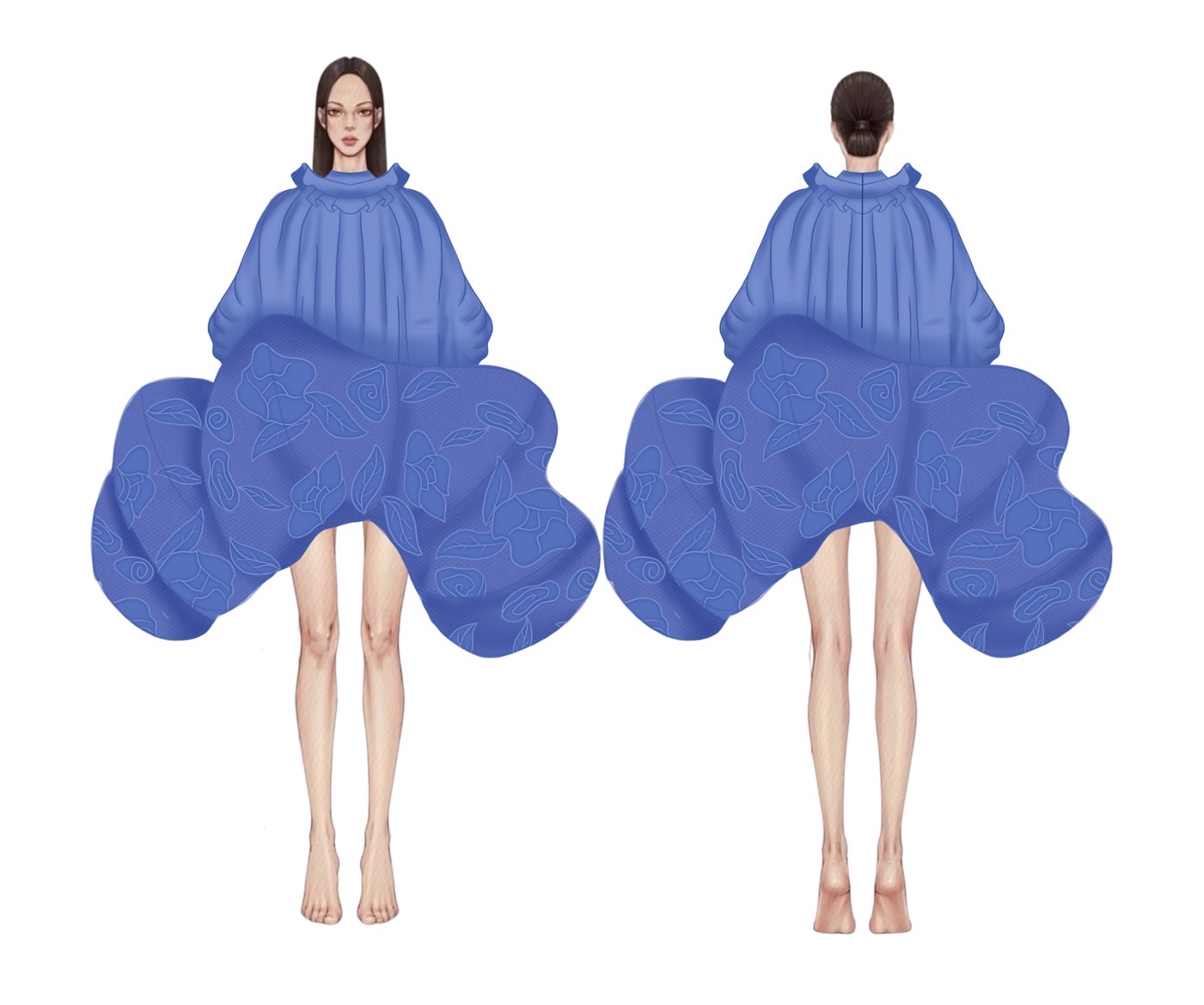
College of Design, Rangsit University
Laddawan Sarapat





Abstract :
Praying to sacred beings or engaging in meditation has been a long-standing practice in many cultures worldwide. Although the divine is invisible, believers hold firm that it can offer protection and blessings, akin to a thin piece of fabric that, despite its delicate appearance, can shield against wind and external elements. Similarly, faith—though unseen—serves as a protective barrier for the mind and fosters emotional stability. Offering flowers to the sacred is another way to express reverence and purity. Flowers, with their fragrance and beauty, symbolize faith and the hope of receiving blessings. These practices provide comfort and spiritual strength during times of hardship. Psychological studies have shown that prayer and meditation can reduce stress and improve mental well-being. Additionally, in some cultures, certain flowers are believed to possess special energies that bring good fortune and fulfillment of wishes. This article explores the belief in divine protection through prayer and floral offerings, as well as their psychological and social impacts. By examining these traditions, we seek to understand why faith continues to be a significant and enduring aspect of human culture.
Objectives :
This concept aims to explore the protective power of lightness, emphasizing how seemingly delicate elements can serve as shields against external adversities. The objectives are:
- To analyze how faith and belief create a psychological sense of security and resilience.
- To illustrate how symbolic protection, such as prayers or rituals, acts as a buffer against negativity.
- To examine the role of light yet strong protective forces in emotional and spiritual well-being.
- To highlight the impact of unseen yet powerful protective elements in fostering confidence and inner peace.
Conceptual Framework :
Although things that appear light may seem fragile, they often conceal a profound protective power within. Just like a thin veil that shields against the cold, a translucent barrier that filters harsh light, or invisible energy waves that create a protective field around us, these elements may not be physically strong, yet they can reduce the impact of negativity and soften life’s hardships.
This concept is reflected in faith, belief, and inner strength, which act as a shield for the mind and spirit. Though unseen, they provide a sense of security and confidence when facing uncertainties.
“Light yet powerful” reinforces the idea that gentleness and faith can be an immense force, offering protection and resilience in life’s challenges.
Process / Methodology :
This study follows a qualitative approach to explore the concept of light yet powerful protection through faith and spiritual practices. The methodology includes:
- Analyzing existing theories on spiritual protection, faith, and emotional resilience.
- Examining metaphors such as thin veils, quilting, and cushioning to represent unseen protective forces.
- Identifying key patterns in how faith-based protection influences emotional well-being.
- Identifying key patterns in how faith-based protection influences emotional well-being.
- A Study on the Significance of Flowers Used in Sacred Worship.
Techniques and Materials :
Techniques for Enhancing Fabric Structure through Layering and Quilted Floral Patterns.
Layering sheer fabric with sheer fabric or sheer fabric with thick fabric strengthens the fabric’s structure. Meanwhile, quilting floral patterns with polyester fiber adds thickness and softness to delicate and fragile petals, allowing them to absorb impact and minimize damage.
The technique of cutting and assembling three-dimensional petal patterns creates a bubble-like cushioning effect, enhancing softness and protective qualities. Additionally, embroidering floral patterns with symbolic threads, representing sacred offerings, promotes mindfulness and inner peace through the meticulous process of embroidery.
Result / Conclusion :
The study highlights how layering and quilting techniques enhance both the structural integrity and symbolic meaning of fabric in sacred offerings. By layering sheer and thick fabrics, the material gains strength while maintaining a delicate aesthetic. Quilting floral patterns with polyester fiber transforms fragile petals into soft, cushioned surfaces that absorb impact, reducing potential damage.
The three-dimensional petal structure mimics a bubble-like protective layer, reinforcing the concept of gentle yet effective shielding. Additionally, embroidered floral motifs, inspired by sacred rituals, foster mindfulness and emotional stability. This research demonstrates that textile techniques not only create physical protection but also symbolize spiritual resilience, reinforcing the connection between craftsmanship, faith, and emotional well-being.
References :
–